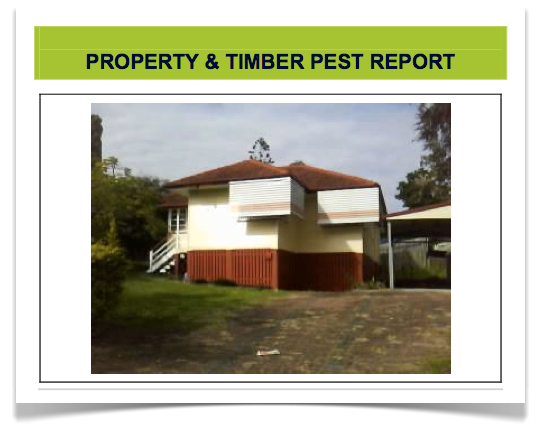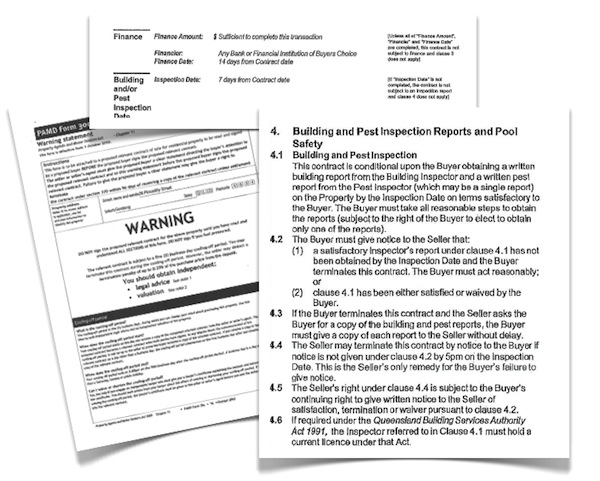So your offer on a property has been accepted. You’re full of excitement, you’re giddy, and felt relieved now that the crucial part is over. You’re about to celebrate—but you realised there’s still some more work to be done. There’s the building and pest inspection.
And this phase of property purchase is just as crucial as the rest of the process. Many contracts fail or crash even after an offer has been accepted and there are several reasons for that. But majority of the reason is because of either finance or an unsatisfactory building and pest inspection.
The latter is what we experienced in our latest Brisbane buyer’s agent property purchase case study.
If you’ve just tuned in, here’s the first three parts of this series:
Brisbane Case Study Part 1: Meeting Peta
Brisbane Case Study Part 2— Suburbs Analysis
Brisbane Case Study Part 3 — Finding THE Property
Building and Pest Inspection and Reports
Being presented with a bulk of papers containing comprehensive reports about the state of the property can be intimidating for any prospective buyer. We’ve been to a number of building and pest inspections and have read reports and we totally understand how these can be overwhelming.
Just how comprehensive a report can be? Well it covers not only the state of property but also all the defects and their potential consequences. Now you understand why this phase can be one of the reasons why some contracts didn’t push through?
That is why it is important (whenever possible) to attend the building and pest inspection—and this is what we usually do—in order to see for ourselves the issues inspector finds and to raise questions on behalf of our clients.
 In the case of Peta, while there were minor issues reported (which were not unusual given the age of the property), two serious issues were highlighted in the building and pest inspection report. First, a number of concrete stumps under the house had cracks. Second, there was a little damp under the house. This can really be a concern as the inspector pointed out that when the damp fall of the land, the house’s drainage mechanism may not be sufficient to move the water away from the footings.
In the case of Peta, while there were minor issues reported (which were not unusual given the age of the property), two serious issues were highlighted in the building and pest inspection report. First, a number of concrete stumps under the house had cracks. Second, there was a little damp under the house. This can really be a concern as the inspector pointed out that when the damp fall of the land, the house’s drainage mechanism may not be sufficient to move the water away from the footings.
Now this is the part that may scare off purchasers. Just how serious those issues are and what are the potential consequences of those issues? More importantly, what are the financial implications to rectify them?
Ask the Experts
In this case, what you don’t know can hurt you. It is easy to be scared off by uncertain things, things that you don’t understand. For some, it is better to chicken out this early than suffer the consequences later on.
But this is the part where experience and knowledge can be powerful. In this case, we sought the help of some experts to help Peta decide. But first things first: we requested the building and pest date be extended by one week to give us time to do further investigations. We then had a plumber inspect the property. This cost Peta $132 including GST. We found out how severe the issue was and were given two quotations on how to rectify the situation.
We also had concrete stumping experts who provided verbal opinion on the severity of the stump issue and we were given a written quote on fixing those stumps. This was provided for free.
Bear in mind though that you must get a formal report if you were to pay a consultant or an expert to look at your building and pest inspection report issues.
To Purchase or Not, that is the question
After obtaining all relevant reports about the issues and discussing the pros and cons, we were then confronted with three options:
- Proceed with the sale based on the current Contract of Sale
- Negotiate a discount on the purchase price, given the issues found
- Pull out of the contract
Peta decided to proceed with the contract—provided purchase price will be reduced.
Another round of negotiation
We previously agreed upon a purchase price of $430k but with the issues that crop up during the building and pest inspection and the implications of those issues, we requested a reduction of $25k. As expected, intense negotiations with the property’s real estate agent occurred until a new purchase price has been agreed upon: $417,500.
Now you understand why the contract period can be a crucial phase.
We’re happy to share that Peta’s property has now settled and she’s the proud owner of her new investment property. If you missed our podcast episode where we interviewed Peta about her experience, click on this to listen.



We have had this happen to us a couple of times buying property and have had to renegotiate the price. It pays to have quality inspectors like yourselves. Well done and I have really enjoyed following Peta’s journey. Thank you.